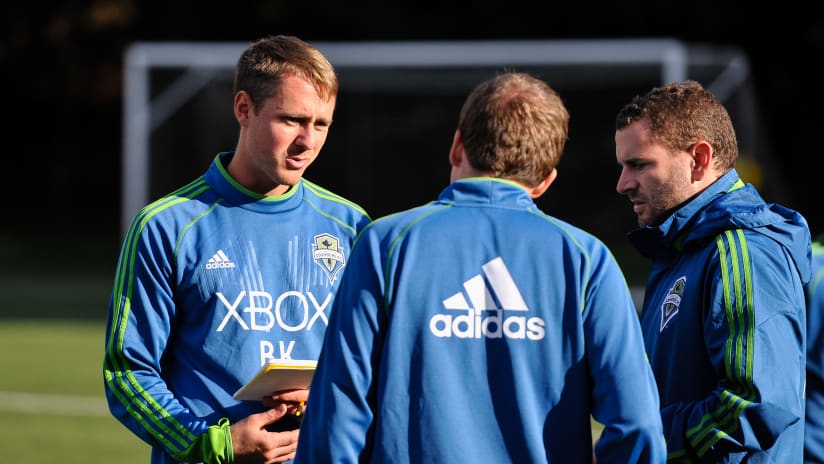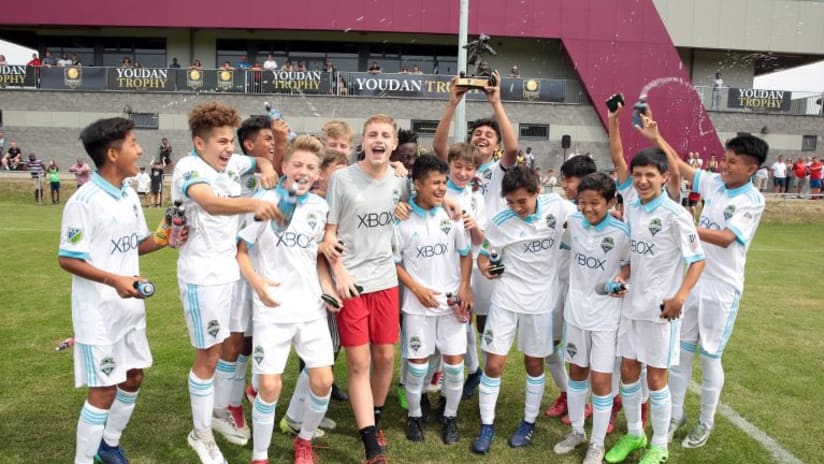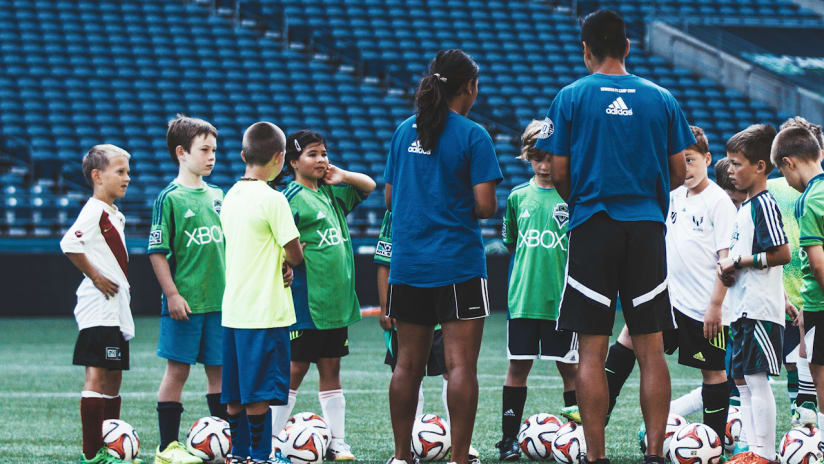Editor's Note: In just three short years, the Seattle Sounders’ investment in the Academy has led to three Youdan Trophy titles, over two dozen players receiving U.S. youth national team call-ups, a wave of teenagers signing pro contracts and a national championship.
This four-part series will trace the history of the last three years under General Manager & President of Soccer Garth Lagerwey, highlighting the initiatives, staffing hires and tectonic shifts in player development that turned Sounders Academy into a sustainable pipeline of elite prospects who will one day put on the iconic Rave Green jersey and play at CenturyLink Field.
Reshaping the Washington youth soccer landscape
Though the MLS-era of the Sounders launched in 2009, the Academy didn’t begin competing in the USSDA until the 2010-11 season. That first team, comprised of the top talents from the local scene, had several players who would go on to pursue professional careers, with former Homegrown and current Newcastle United FC and U.S. national team standout DeAndre Yedlin the most notable example.
The first wave of Sounders Academy coaches possessed strong ties to the community, making them aware of some of the top players. Most would go on to have sterling careers in the NCAA, and a handful of them — Sean Okoli, Aaron Kovar and Yedlin — became MLS players.
But the early success wasn’t sustainable, as it relied on the local clubs churning elite prospects at a consistent clip, a feat for which even the vibrant soccer community in Seattle wasn’t suited.
From 2010-14, the Academy operated on a tryout system. The coaching staff would spend time on the weekends scouting the local club scene, which gave them an idea of who the some of the top players were, but, ultimately, the rest of the roster was selected from a two-day open tryout featuring up to 300 players.
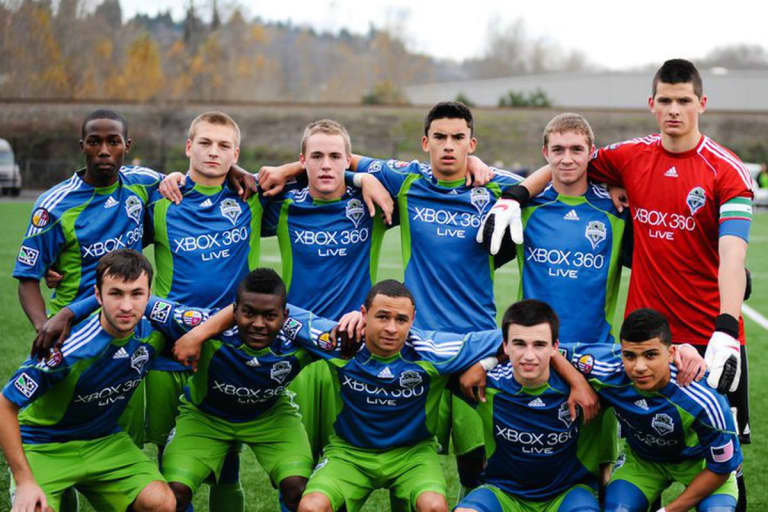
The inaugural Sounders Academy U-18 squad, featuring DeAndre Yedlin, Darwin Jones and Aaron Kovar | Courtesy of Sean Henderson
“You tend to get it wrong and miss talented players when you have tryouts as opposed to watching them over the course of two years, scouting them in all kinds of different environments and then making informed decisions,” said Sounders FC Head Scout Sean Henderson, who spent seven years as an Academy coach.
So, in 2015, the club implemented two initiatives that reshaped the youth soccer landscape: The Sounders Discovery Program (SDP) and the Club Partnerships/Affiliates project.
“The difference between 2010 and 2018 is we are scouting players in our own market and around the country better than we’ve been able to, and we’re able to identify potential players,” said Henderson. “Everything is in place for a player to succeed. We can push a player straight through the system from SDP to the First Team. The method and the process have improved to where we have a chance to truly develop a player without having to hope for outside help along the way.”
Since Sounders Academy doesn’t field full-time teams until the U-15 level, SDP invites the top players throughout the state in the U-12, U-13 and U-14 age groups to train together twice a week in four-month cycles with Academy coaches, using the Sounders curriculum and methodology, while they remain with their respective club teams.
“You’re not coming into the Sounders unless you are national team level as an outside player.” — S2 Assistant Coach and former Academy coach Wade Webber
This effectively doubles the amount of quality training they receive, while simultaneously enabling the Sounders Academy coaches to evaluate how they respond to feedback and monitor their progress over the course of several years.
Under the old system, the coaches might be able to scout prospective players 10 times with their club teams before inviting them into the Academy, while fielding the team’s depth from the tryouts. But with an Academy staff that features twice as many full-time coaches and a full-time scout evaluating the local scene, as well as an expansive network of trusted coaches covering every inch of Washington, the club can watch a local kid play 20-30 games with his club team between the ages of 10-13. And with SDP, they can collect a sample size of 200-plus training sessions if the player stays in the program for all three years.
Since the advent of SDP, a total of 278 players, representing 28 different clubs throughout Washington, have spent at least one cycle in the program. In fact, eight of the players on the U-17s that won the USSDA national championship were a part of the inaugural SDP class.
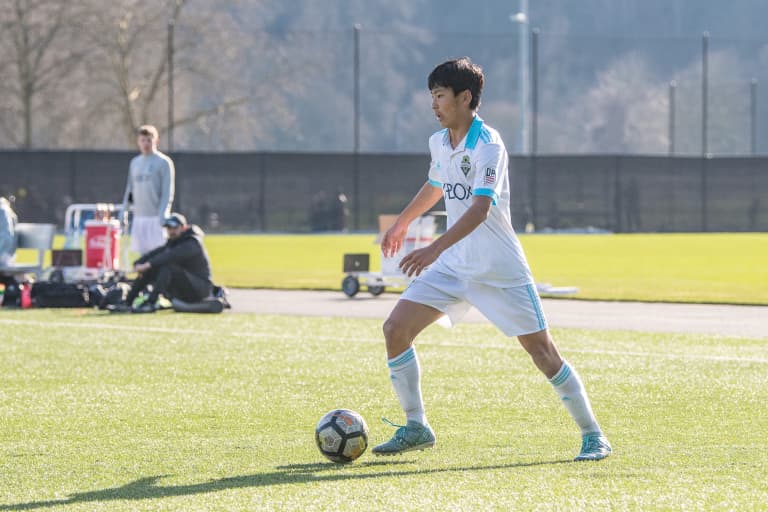
Sounders Academy U-17 midfielder Sota Kitahara | Quinn Width
According to Sounders Academy Head of Recruitment Henry Brauner, it’s important to draw the distinction between talent identification and scouting.
“Talent identification is: ‘Can we identify a top player?’” he said. “That’s what those tryouts would be. You have 200-plus kids, only ‘X’ number of coaches, so you’re only making a decision on talent identification. Scouting is: the player has been identified — he’s a good player, we like him — so scouting is going to see him in his club environment. We’ll talk to his coaches, we’ll talk to his parents, we’ll talk to a rival coach in his league, so we’re not just talking to people in his support network.
“We’ll call their counselors at the school to see what their behavior is like, so you get to learn more about the kids. We’re able to get a clearer picture about their character, who that player is as a person and an athlete.”
The Club Partnerships and Affiliates program dovetails perfectly with SDP, as it provides the Academy staff additional avenues for player identification and scouting. The first official club partner, Seattle United, was announced in November 2015. Sounders Academy has since named seven other official Partner and Affiliate clubs, primarily in previously untapped markets like Yakima, Spokane, Bellingham, North Carolina and Central California. Each club has dozens of coaches on the ground, constantly evaluating their players and looking to provide the top ones a pathway to MLS through the Sounders.
On the U-17 national championship-winning team, 11 of the players signed were from Partner or Affiliate Clubs.
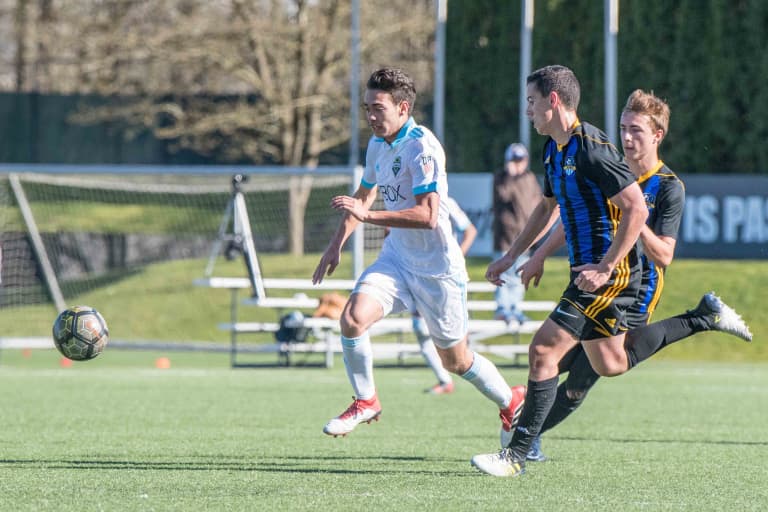
Sounders Academy U-17 forward Alec Diaz | Quinn Width
Local and national scouting networks
The Club Partnerships and Affiliates initiatives is very much a two-way street. Sounders Academy provides the coaches with training curriculums aimed at developing technical, creative, intelligent players between the ages of 8-12. The Academy coaches will also run training sessions for specific teams at these Partner Clubs on a consistent basis, providing quality development and opportunities to identify and scout players.
“It’s every day,” said Brauner. “I’ll be out running sessions with PAC Northwest, I’ll be out running sessions with Eastside FC, I’ll be running sessions with Seattle United. They might tell us they have a player, or they might tell us they played a kid from Yakima who was unbelievable. So, then we’ll call our Yakima guy and follow up. It’s constant. Every weekend our affiliate clubs have their DA games at the 12, 13 and 14 age group, so one of us is there. It’s a team thing. There’s so many good players that you want to make sure you see everybody.”
On the national scene, the club has a scouting network of roughly 20 coaches, spanning every level of youth soccer. At any given point in time, the club is tracking the progress of roughly 90 national players. The lifecycle of scouting a national player can range anywhere from four months to three years, according to Brauner, with the biggest differentiating variable being the character of the player.
“We would have missed Ray Serrano...but because of all of these things we put in place, we were able to identify him and bring him in.” — Sounders Head Scout Sean Henderson
“We’ve done a great job of identifying targets from out of state,” said S2 assistant coach Wade Webber, who spent two years as an Academy coach. “You’re not coming into the Sounders unless you are national team level as an outside player. We’re starting to identify our Homegrown targets younger. They’re bringing in 15-year-olds and teaching them the Sounders culture. Then when they get to be 17 and 18, they really feel like they’re from Seattle, and they’ve been developed in the Sounders’ brand of soccer.”
A few examples of this revamped scouting apparatus include S2-signed prospects Azriel Gonzalez, Alfonso Ocampo-Chavez, Marlon Vargas and Ray Serrano. Zeroing in specifically on current Sounders Academy players, U.S. U-16 national team mainstays Daniel Leyva and Austin Brummett were brought into the fold when they were 14.
In 2015, the club also launched the Homestay Program, which links out-of-territory Sounders Academy players with local families, providing these young prospects with their own support network while exponentially expanding the pool of potential players for the club. The first Homestay player in club history was U.S. youth national team left back Nick Hinds, who currently plays for S2.
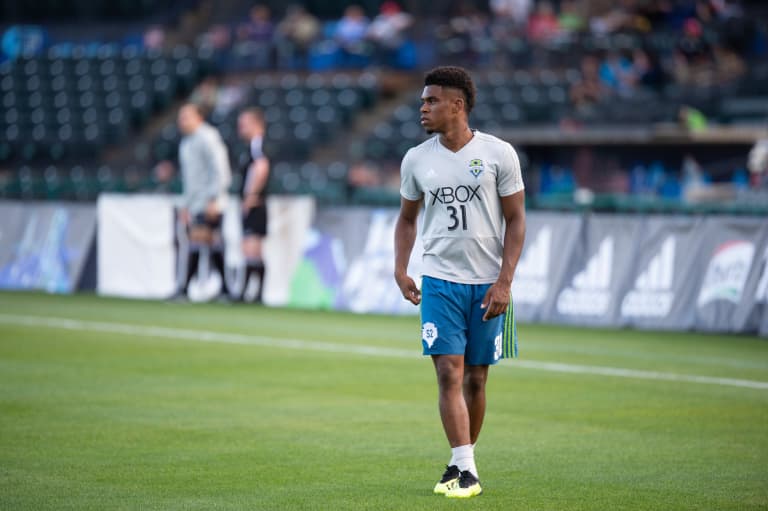
Nick Hinds, the first Homestay player in club history, warms up ahead of an S2 match in Tacoma | Charis Wilson
Since launching SDP, the Club Partnerships and Affiliates initiative and the Homestay Program, a total of 27 different Sounders Academy players have received U.S. youth national team call-ups.
In addition to identifying and scouting top-end talent, these three programs have helped to ensure that elite players don’t fall through the cracks because of where they were born, which club they play for or how far away they live from Seattle.
“Without a doubt, I think we would’ve missed Ray Serrano in the early years,” said Henderson. “Because of all of these things we put in place, we were able to identify him and bring him in.”
Building positional profiles
The final piece of the identification and scouting has been the creation and implementation of positional profiles.
Two years ago, the Academy set out to develop a consistent game model, or unified playing style, across all of its youth teams. So, to reliably play in this style, they spent three months building profiles for each position. These profiles include specific traits and data points for every position on the field, streamlining the player identification and scouting process.
“The positional profile gives the scout, or whoever is out there identifying talent, a head start because they know what we’re looking for,” said Brauner. “And then there’s some characteristics where if we see a winger or a center forward, and they have the propensity to defend, they want to defend, they win 80 percent of their defensive duels, in our head we’re thinking that he could fit as a left back in our system because he hits all these markers that a left back has in our positional profiles.
“With the positional profile, it keeps you honest. It’s the baseline that makes sure you cut through your biases as a coach. If they hit these numbers, have these characteristics, that’s what you want for that position.”
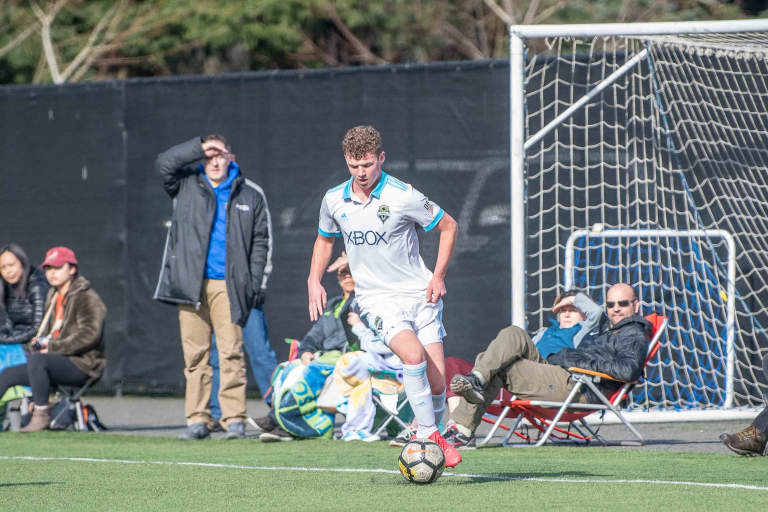
Sounders Academy U-17 center back Blake Malone plays a DA match at Starfire Sports Complex | Quinn Width
Perhaps the best example of this phenomenon is Sounders Academy center back Blake Malone, who played every minute of the playoffs for the U-17s and has started four matches for S2 this season. Malone, 16, was a central midfielder for his club side in Las Vegas. But because of his excellent passing range and exceptional mobility, consistently hitting key data points in the Sounders’ positional profile, they recruited him to play center back.
Under the old system, the club was able to identify a lot of talented players. But each team played a different style, determined by the players they had on the roster. Outside of the top 2-3 players, there was a significant drop off in terms of talent.
But with SDP, the Club Partnerships and Affiliates initiative, the Homestay Program, and the positional profiles in place, the Sounders have been able to reduce any inefficiencies or confounds in the process, making them one of the top youth systems in North America.

